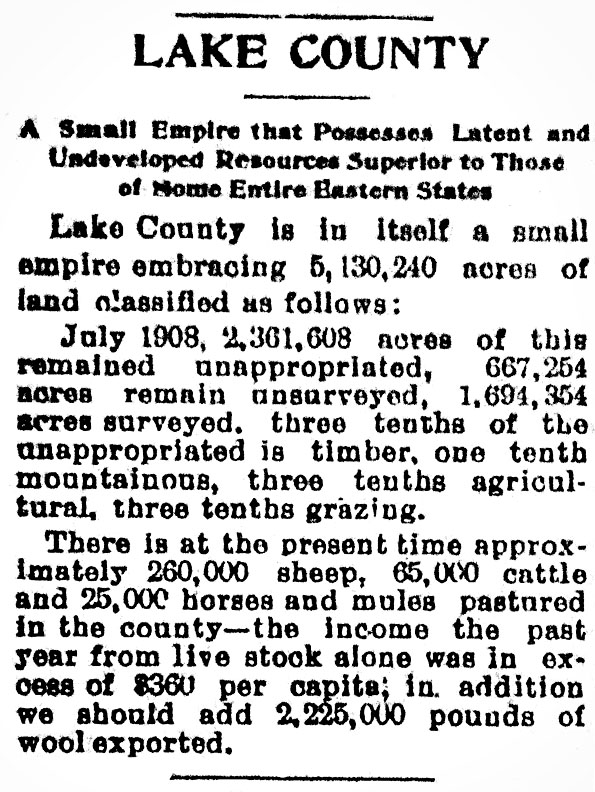- Catalog No. —
- Lakeview Examiner, March 4, 1909
- Date —
- March 4, 1909
- Era —
- 1881-1920 (Industrialization and Progressive Reform)
- Themes —
- Environment and Natural Resources, Government, Law, and Politics, Oregon Trail and Resettlement
- Credits —
- Oregon Historical Society
- Regions —
- Southeast
- Author —
- Lakeview Examiner
News Article, Lake County
This 1909 article in the Lakeview Examiner reported that 1,694,354 acres of the surveyed land in Lake County was still “unappropriated.” The article was part of a larger promotion extolling the many opportunities for settlers in the future garden spot of the Northwest. Lake County, located in south-central Oregon, has an arid climate.
In the early 20th century, residents who lived east of the Cascade Mountains attempted to attract more settlers to their communities. The federal passage of both the 1894 Carey Act and the 1902 Reclamation Act encouraged people to move into the drier climates of the West to farm. In the early 20th Century, many people believed that science and engineering could improve the natural environment.
Between 1906 and 1912, hundreds of people claimed land in the Fort Rock Valley in northern Lake County, but most left after the already arid region went into a long drought between 1918 and 1945. Some of the shallow lakes that gave Lake County its name dried up. The annual rainfall in Lake County is currently estimated at 15.8 inches—about twenty inches less than the annual rainfall in the Willamette Valley.
Between 1900 and 1920, the population of Lake County grew from 2,847 to 3,991. In 1910, the census reported that farmers were using nearly 400,000 acres of land, mostly to graze livestock. The U.S. Census Bureau estimated that 7,470 people lived in Lake County in 2001.
Written by Kathy Tucker, © Oregon Historical Society, 2002.
